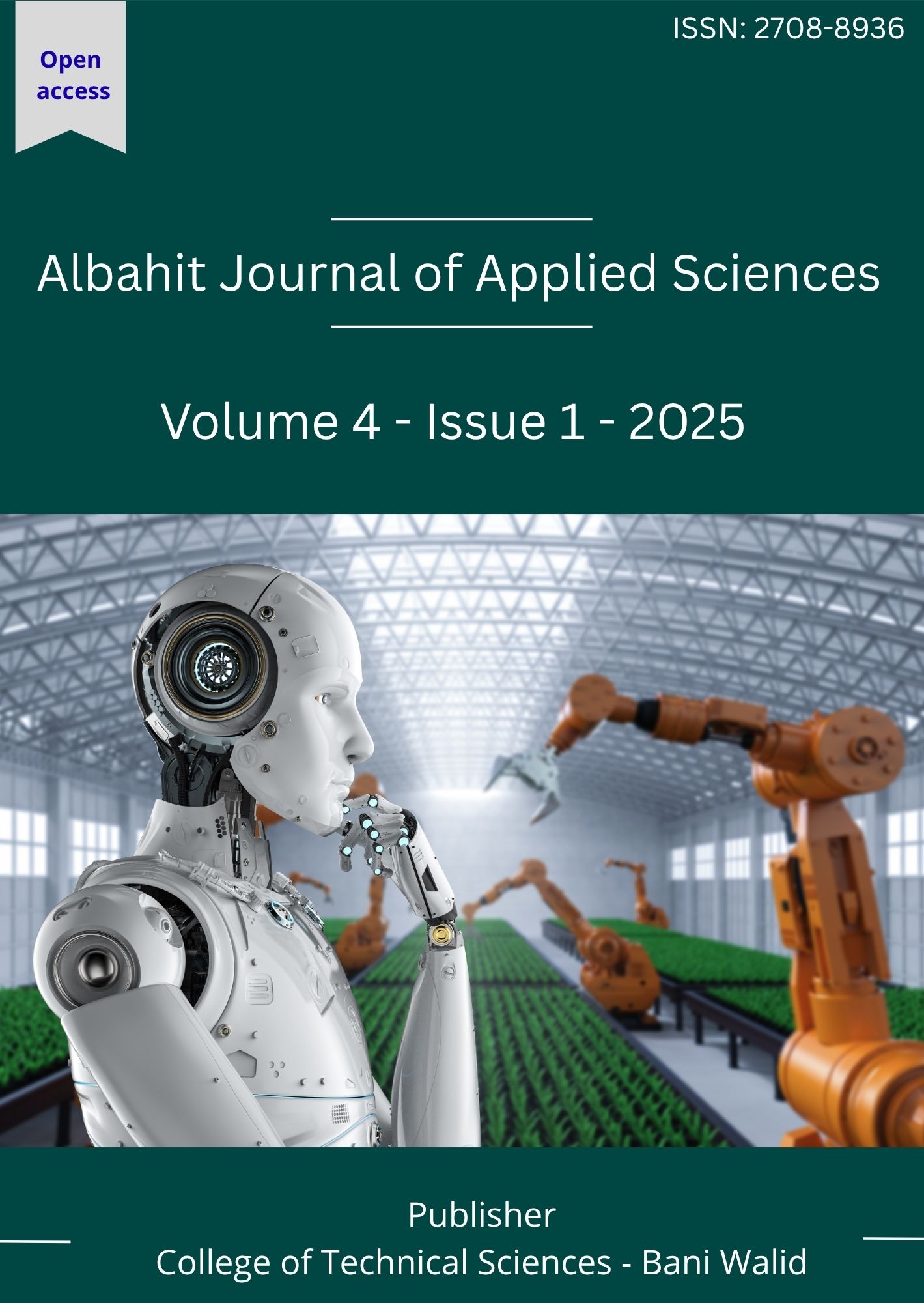High-Temperature Superconductors: Their Physical Properties and Technological Applications
Keywords:
Superconductivity, High-Tc superconductors, Critical temperature, Tc, Zero resistance, Perfect diamagnetism, Critical current, Jc, The Meissner EffectAbstract
Superconductivity is a unique physical phenomenon discovered over a century ago. Generally, it can be characterized by three essential properties, which are zero resistance, perfect diamagnetism, and microscopic quantum phenomenon (that known as the BCS theory). However, materials that have such as these significant properties when subjected to temperature below a critical temperature (Tc) become superconductor's materials. As a result, these advantages open up opportunities in front of researches and scientists to better understanding the mysteries that behind them. Furthermore, high-temperature super-conductors (abbreviated as HTS) play an important role in many applications and technologic fields. Therefore, it uses liquid nitrogen (LN) when cooling a sample, giving it a specified curial temperature compared to conventional superconductors that use liquid helium (LHe) in cooling. From this perceptive, began to use these materials in most disciples and modern development technologies. Indeed, the critical temperature of superconducting materials has been increasing progressively but still not approaching to the room temperature, which is still as a dream not achieving yet, because the high cost and needs refrigerators for their applications compared with traditional conductors. This paper is focusing on the history of high-temperature superconductors and also highlights the behavior of superconducting materials, their fundamental characteristics, and applications in nanotechnology.
References
[1] Hussan, N. Q.A., Taha, A.A., & Ahmed, D.S. (2021). Characterization of Treated Multi-Walled Carbon Nanotubes and Antibacterial Properties. Journal of Applied Sciences and Nanotechnology, 1(2): 1-9.
[2] Ramsden, J.J. (2005). What is nanotechnology? Nanotechnology Perceptions, 1(1): 3-17.
[3] Awan, I.Z., Hussain, S. B., Haq, A. ul., & Khan, A. Q. (2016). Wondrous Nanotechnology. Journal of the Chemical Society of Pakistan, 38(6): 1026-1055.
[4] Hussein, A. A. A., Hussein, A. M.A., &N.A. Hasan, N.A. (2023). Study of the Properties of YBCO Superconductor Compound in Various Preparation Methods: A Short Review. Journal of Applied Sciences and Nanotechnology, 3(1): 65-79.
[5] Tegart, G. (2003). Nanotechnology: The Technology for the 21st Century. The Second International Conference on Technology foresight, 1-12.
[6] Dahal, K. P. (2011). Superconductivity: A centenary Celebration. The Himalayan Physics, 2: 26-34.
[7] Abd-Shukor, R. (2004). Introduction to Superconductivity in Metals, Alloys & Cuprates. Tg Malim: Universiti Pendidikan Slutan Idris.
[8] Mangin, P., & Khan, R. (2017). Superconductivity an Introduction. Springer International Publisher AG.
[9] Rahman, Md. A., Rahaman, Md. Z., & Samsuddoha, Md. N. (2015). A Review on Cuprate Based Superconducting Materials Including Characteristics and Application, 3(2): 39-56.
[10] Charles.P. Poole, Jr., Prozorov, R., Farach, H, A., & Creswick, R. J. (2014). Superconductivity Third Edition. Elsevier Inc. 870.
[11] Charles P. Poole, Jr. (2000). Hand Book of Superconductivity. Academic Press, USA. 693.
[12] Soltan, S. (2005). Interaction of Superconductivity and Ferromagnetism in YBCO/LCMO Heterostructures. Cuvillier Verlag Gӧttingen. 155.
[13] Kruchinin, S. P. (2014). Physics of High-Tc Superconductors. American Scientific Publishers. 2(2): 1-22.
[14] Malik, M. A., & Malik, B. A. (2014). High Temperature Superconductivity: Materials, Mechanism and Applications. Bulgarian Journal of Physic, 4: 305–314.
[15] Schlepütz, C, M. (2009). Systematic Structure Investigation of YBCO Thin Films with Direct Methods and surface x-ray Diffraction. PhD thesis, Doctor of Natural Sciences (Dr. Sc. nat.) submitted to the Faculty of Mathematics and Natural Sciences of the University of Zurich.
[16] Klemm, R, A. (2012). Layered Superconductors: Volume1. OUP Oxford. 559.
[17] Azzouz, F. B., Zouaoui, M., Mani, K. D., Annabi, M., Tangelo, G. V., & Ben Salem, M. (2006). Structure, microstructure and transport properties of B- doped YBCO system. Physica C, 442(1): 13-19.
[18] Holder, A. B., & Hugo Keller, H. (2020). High-temperature superconductors: underlying physics and applications. Journal of Chemical Sciences, 75(1-2):3-14.
[19] Elfaki, A. A. A., Elamin, A. A., Abd-Alla, M. D., Elgani, R. A., Mohammed, A. S.,
Mo hammed, A. A., & Elhouri, S. A. (2017). The Effect of Temperature on Conductivity of Conductors and superconductors. American Journal of Physics and Applications, 5(1): 1-5.
[20] Hasan, M. S., & Ali, S. S. (2022). Properties and Types of Superconductors. Materials Research Forum LLC, 132: 17-48.
[21] Fagaly, R, L. (2006). Superconducting quantum interference device instruments and applications. Review of Scientific Instruments, 77(10): 1-45.
[22] Beriso, A. (2019). Superperconductors, Their History and Applications. Advances in Physics Theories and Applications, 77: 6-13.
[23] Lembereger, L. (2016). Vortex lattice in conventional and unconventional superconductors. PhD thesis, university of Birmingham.
[24] Cohen, L. F., & Jensen, H. J. (1997). Open questions in the magnetic behavior of high-temperature superconductors. Institute of Physics Publishing, 60: 1581–1672.
[25] Sezer, B, S. (2010). Fabrication of Lu doped YBCO Thin Films by Pulsed Laser Deposition Technique and Their Characterization. Master of Science thesis in Physics, İzmir Institute of Technology.
[26] Hughes, D, D. (2001). The Critical Current of Superconductors: an historical review. Fizika Nizkikh Temperature, 27 (9/10): 967-979.
[27] Abd- Shukor, R. (2009). High Temperature Superconductors: Materials, Mechanisms and Applications. Academy of Sciences Malaysia. https://www.researchgate.net/puplication/237220940 .
[28] Qingsong, YU., Kai, LI., Hao, HU., Hongtao, LIU., Nan, S., & Shuai, LIU. (2023).
Research and technological prospects of applications for superconducting electrodynamics
suspension. Electric Drive for Locomotives, (4):1-8.
[29] Shibani, W.M., Zullkafli, M. F., & Basuno, B. (2016). Methods of Transport Technologies: A Review on Using Tube/Tunnel Systems. IOP Conference Series: Materials Science and Engineering.
[30] Jacob, A., & Monteiro, N. (2018). A new concept of super elevation in magnetic levitation -prodynamic. Transportation systems and Technology, 4(4):77-111.







